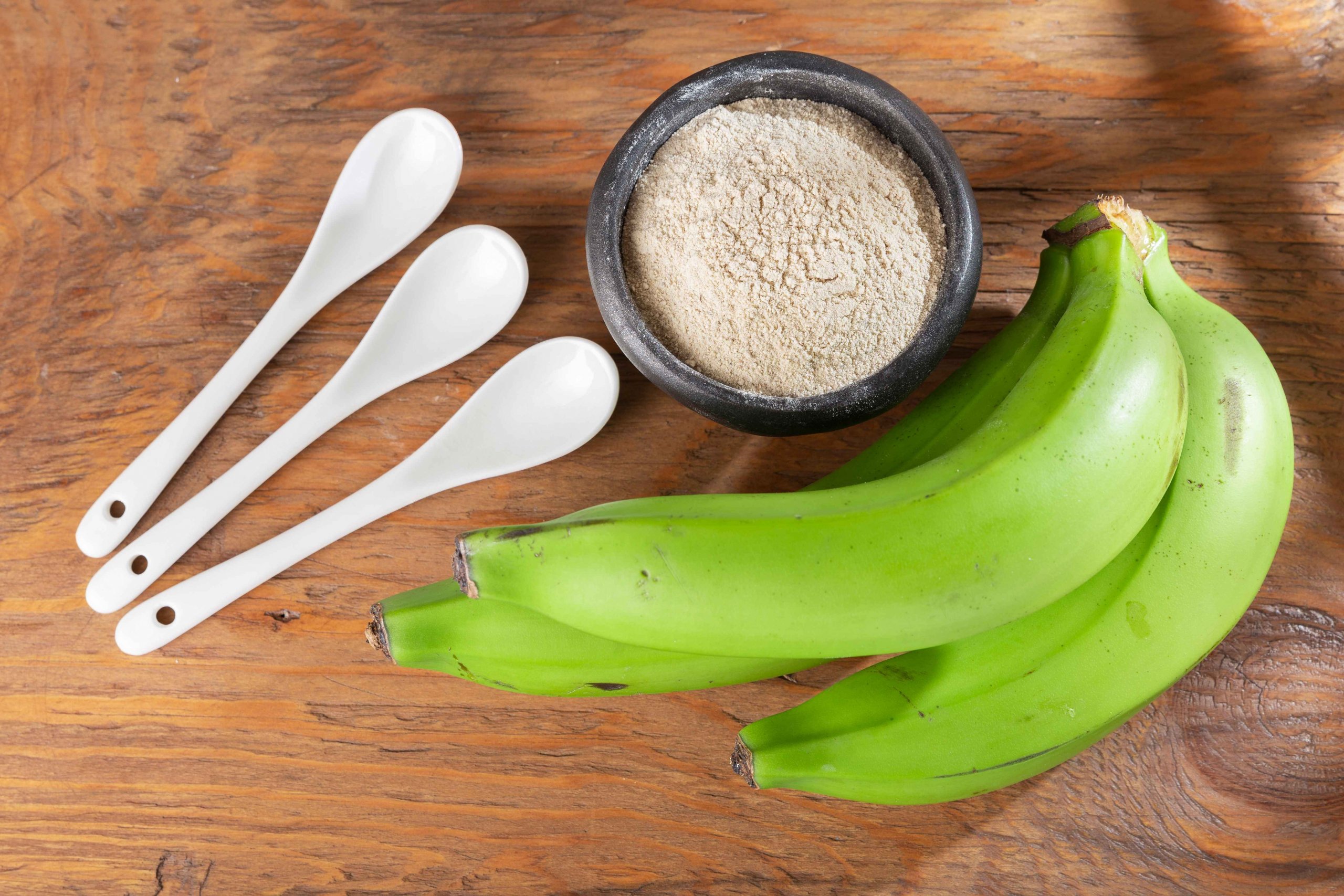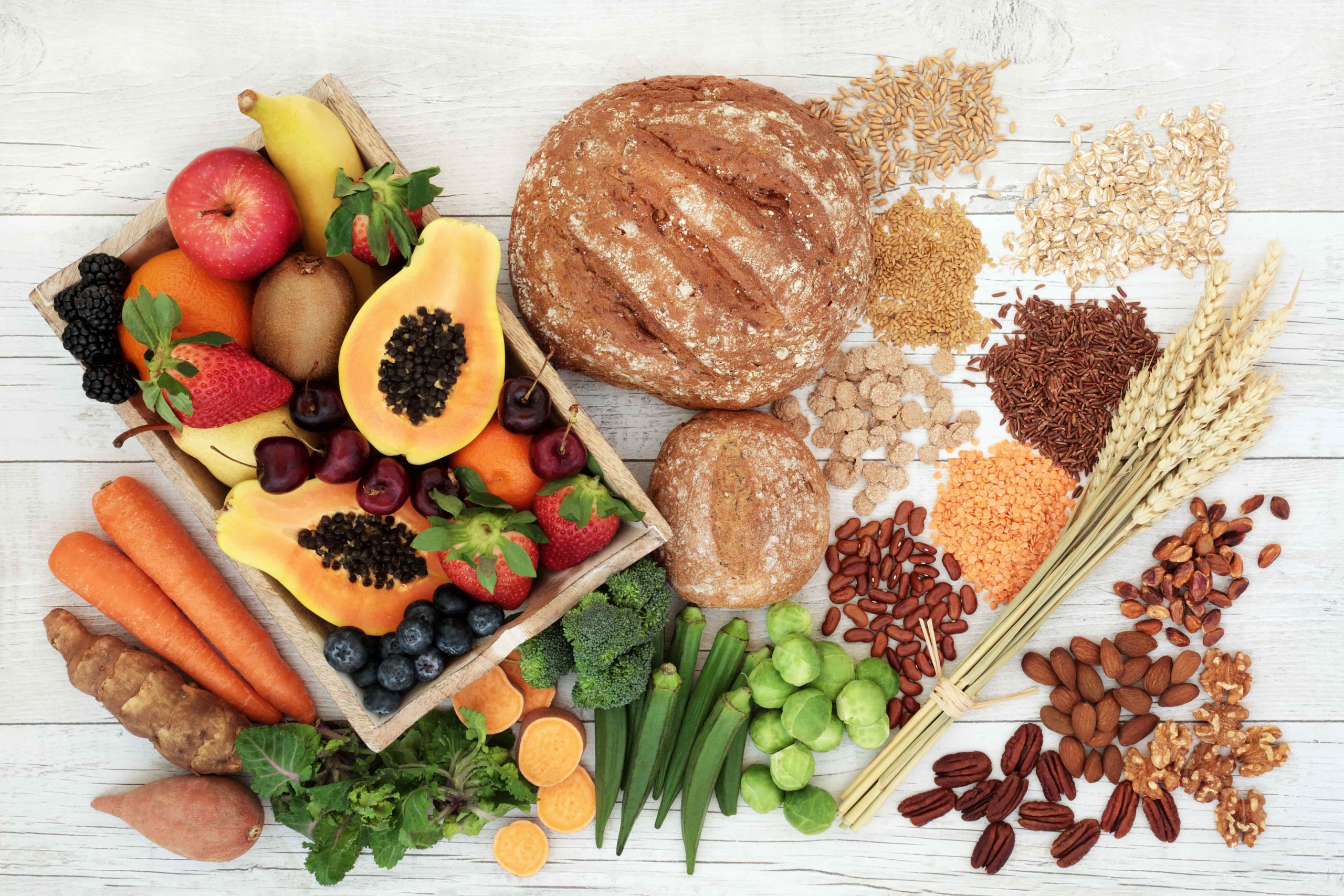In this article, we’ll cover the following topics:
- What Exactly Is Resistant Starch?
- Why You Need RS in Your Diet
- So, Is RS a Prebiotic?
- Using RS as a Prebiotic: How to Reap the Benefits
- Wrapping Things Up
In the world of gut health, two terms typically dominate the convo: probiotics and prebiotics.
Probiotics are living microorganisms and beneficial bacteria that live in your gut and are good for digestive health. Prebiotics, meanwhile, are their food sources, unique plant fibers that fuel these bacteria and help their populations grow.
(A third equally important “biotic” buzzword is postbiotics — the health-boosting chemical reactions that take place when prebiotics and probiotics get together for their little fermentation song and dance.)
Prebiotic fiber is unique because it travels undigested to the colon where it’s fermented by friendly intestinal bacteria. This fermentation process then unleashes a variety of health benefits throughout the body.
Not all plant fibers have this prebiotic effect. But most prebiotics are found in plants.
So, how does resistant starch fit into all of this? About as snug as a latex glove! You see, resistant starch is a prebiotic fiber — and a particularly powerful one at that. Like a certain Scottie Pippen for the ‘96 Bulls or getting quality alone time, resistant starch might be underrated. But it’s undeniably effective.
Here’s why resistant starch is a prebiotic powerhouse that deserves a spot high on your list of health priorities.
What Exactly is Resistant Starch?

Resistant starch is a specific type of carbohydrate that bypasses digestion in your small intestine. It then travels mostly untouched to the colon where it nourishes healthy bacteria in your gut. (Sound familiar?)
There are 5 types of resistant starch. Each type varies based on different chemical and/or cellular properties, but the general gist is that our digestive enzymes struggle to break them down. Which is a GOOD thing. Because that’s what kickstarts the prebiotic effect and nourishes your good gut bacteria.
Foods that contain high amounts of resistant starch include:
- Raw potatoes
- Under-ripe green bananas
- Legumes, nuts, and seeds
- Whole grains such as oats and barley
- Cooked-then-cooled starches such as rice, potatoes, and pasta
Perhaps the most notable aspect of resistant starch is the way in which your body processes it — and how this process promotes overall metabolic health.
When you eat resistant starch, it ends up mostly intact in your lower gut. Here, good bacteria feed on it. Their populations grow. Concurrently, the populations of bad gut bacteria shrink.
As the good bacteria feed on and ferment the resistant starch, they release metabolites like short-chain fatty acids (SCFAs). These metabolites are essentially gut-balancing, health-boosting byproduct rock-stars that have all sorts of wide-ranging health benefits, including strengthening the gut barrier wall, reducing inflammation, regulating appetite, and more. [1]
One particularly noteworthy SCFA, called butyrate, is very good at stabilizing blood sugar levels, promoting optimal digestive health, improving sleep, and even protecting against diseases such as obesity and cancer. [2, 3, 4]
And guess what food source provides one of the most efficient ways to produce butyrate in the body? You guessed it — resistant starch!
Why You Need Resistant Starch in Your Diet
Broadly speaking, the key to improved metabolic health is to get more fiber in general. Fiber is kind of like the Tibetan Sherpas that summit Everest — both are rarely in the headlines, but they do a TON of heavy-lifting.
Individuals with high intakes of dietary fiber appear to be at significantly lower risk for developing heart disease, stroke, hypertension, diabetes, obesity, and certain gastrointestinal diseases. More fiber intake also lowers blood pressure, improves insulin sensitivity, and aids in weight loss and digestive health. [5]
Resistant starch is just one specific type of dietary fiber. But because of its prebiotic effects, it’s been shown to have some really unique health benefits. These include:
- Better blood sugar control
- Improved weight management
- Increased immunity
- Healthier digestion
- Enhanced energy, mood, and sleep [6]
So, Is Resistant Starch a Prebiotic?

Short answer? Yes, resistant starch is a prebiotic. Longer, more convoluted answer? It hasn’t always had this status.
In one particularly beefy scientific paper titled “Prebiotics: why definitions matter”, the authors explored the history of prebiotics — their types, functions, definitions, the works.
To summarize, the prebiotic concept was introduced about 20 years ago. And still today, the scientific community continues to evolve their approach to understanding and defining it. At first, certain fibers like resistant starch and pectin (a fiber found in fruits like apples) weren’t considered prebiotic. Now they are. [7]
There are lots of plant fibers with prebiotic effects. (Though not all of them have as easily-pronounceable names as resistant starch, it must be said!)
Xylooligosaccharides (XOS) are prebiotic fibers found in foods like bamboo shoots, honey, and various fruits and vegetables. [8] Fructooligosaccharides (FOS) are prebiotics found in garlic, onions, chicory, asparagus, and artichokes. [9] Inulin is a prebiotic that occurs naturally in leeks, garlic, onions, wheat, chicory, oats, Jerusalem artichokes, and more. [10]
In general, it’s a good idea to strive for a variety of plants and whole foods in order to achieve more microbial diversity in your gut biome.
But one reason resistant starch, in particular, is such a good source of prebiotic fiber — in addition to producing SCFAs like butyrate — is that RS is low FODMAP, which means it’s easier on the gut than certain other prebiotic fibers like inulin. [11]
Using Resistant Starch as a Prebiotic: How to Reap the Benefits

Foods High in RS
The most common sources of resistant starch include: raw potatoes, green bananas, whole grains, legumes, and cooked-then-cooled starches like rice, pasta, and potatoes.
Truth be told, when you look at this list, it’s easy to see why most Americans only consume about 3-8 grams of resistant starch per day. [12] Raw potatoes and green bananas aren’t exactly high on the list of culinary delicacies!
Supplementing Your Diet with RS
A much more efficient way to fill in the resistant starch fiber gaps is by supplementing your diet with functional foods fortified with RS.
Supergut’s proprietary blend of resistant starch is sourced from only the highest-quality ingredients and is scientifically shown to improve your blood sugar, regulate your digestive health, and reboot your metabolism.
In short, Supergut is real food. With real benefits.
Tips for Using Resistant Starch
While there’s no formal recommendation for the precise amount of resistant starch to have in your diet, there’s evidence to suggest at least 20 grams of RS per day can have beneficial effects for your health.
In our own gold-standard clinical study at Supergut, we saw participants who consumed over 20 grams of RS per day reduce their A1C levels by 0.7% over 12 weeks.
An efficient way to get more resistant starch in your diet is to try one of these 6 easy ways to see measurable results with Supergut.
Is Resistant Starch a Prebiotic? Wrapping Things Up

All in all, resistant starch is a rock-star in the realm of gut health.
Because of its prebiotic effects, RS promotes the growth of beneficial microorganisms and helps rebalance your gut microbiome.
If you’re looking for a way to tap into the gut-healing potential of this unique supernutrient, then visit Supergut today!








